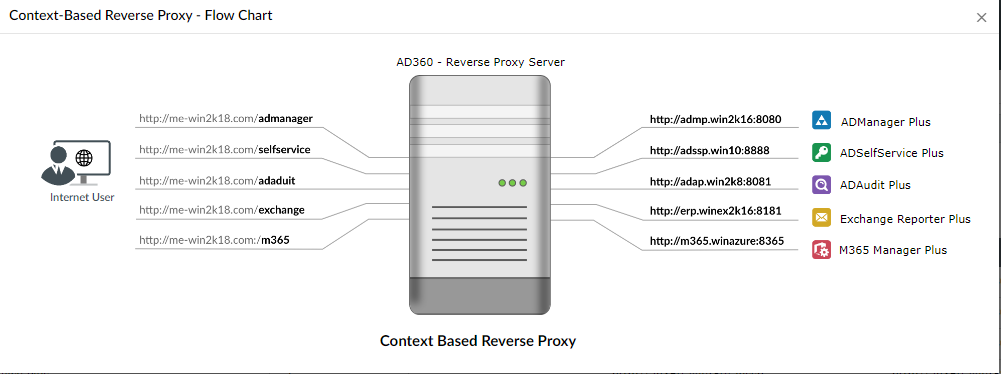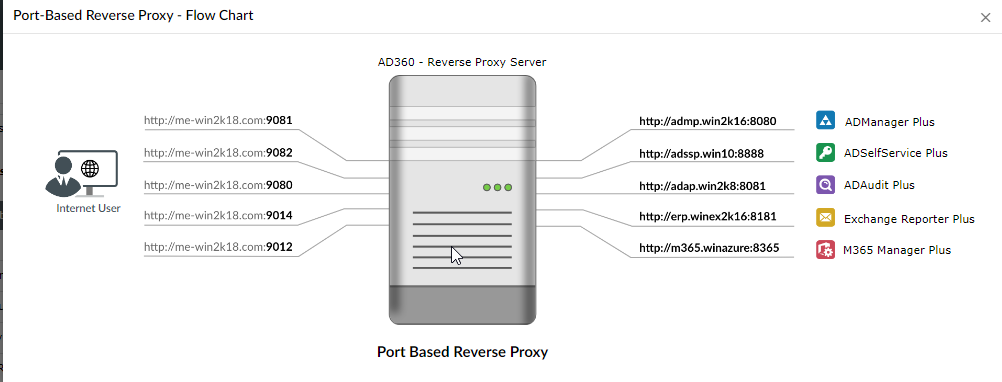A reverse proxy is a proxy service that handles requests from clients, forwards them to the necessary servers, and subsequently delivers the servers’ responses to clients without revealing the identity of the servers. AD360 comes bundled with a reverse proxy server, which, when enabled, provides an additional protective layer for AD360 and the products integrated with it.
AD360 lets you enable:
This webpage will explain the steps involved in configuring AD360 to act as a reverse proxy server.
In a context-based reverse proxy, the URL of the AD360 server and the servers in which its constituent products are installed should be given a unique context path. Whenever a user requests access, the request is forwarded to the respective servers based on the context path in the URL. The end users will not know the details of the servers from which they are accessing the products.

In a port-based reverse proxy, you need to choose a unique port number and protocol for AD360 and its product servers. In this case, a unique port number for each servers is mandatory, whereas specifying the unique protocol is optional. The hostname remains the same for all servers. In such cases, the reverse proxy server will forward a user's request to the appropriate server based on the port number in the URL and the protocol.

Note: The hostname of the AD360 server will serve as the hostname for the integrated products’ servers when the reverse proxy is enabled.